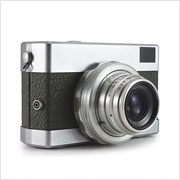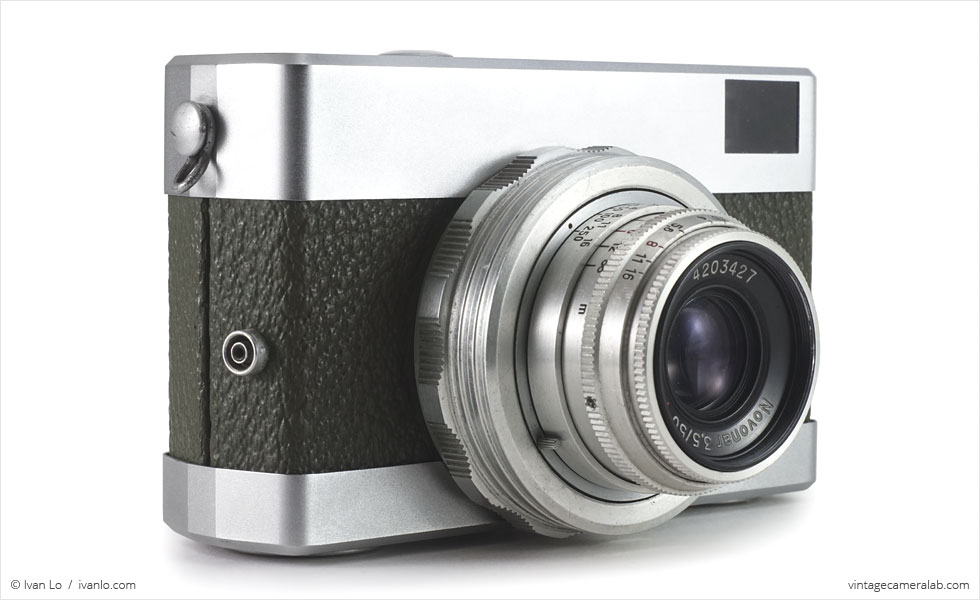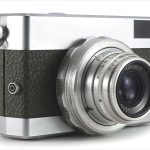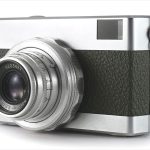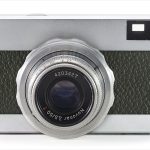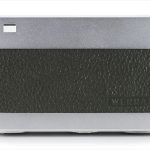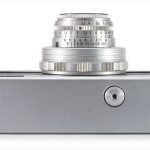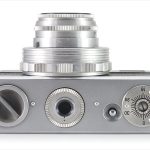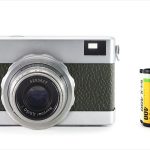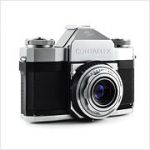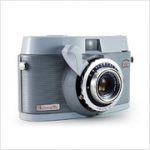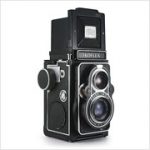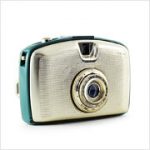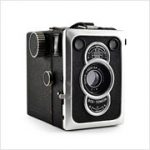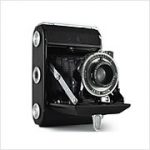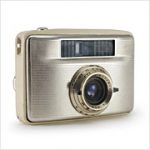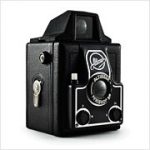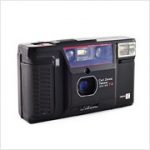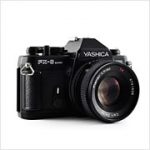Carl Zeiss Jena Werra Specifications
| Manufacturer: | VEB Carl Zeiss Jena |
| Origin: | East Germany |
| (modern day Germany) | |
| Made in: | Jena, East Germany |
| (modern day Germany) | |
| Introduced: | 1954 |
| Type: | Viewfinder |
| Format: | 35mm Film |
| Dimensions: | 11.5 x 7.2 x 7.2 cm |
Carl Zeiss Jena Werra Overview
The Carl Zeiss Jena Werra is the very first model in a line of sleek 35mm viewfinder cameras produced by VEB Carl Zeiss Jena, Zeiss Ikon’s factory in the city of Jena where the company was originally founded in 1846. After the war, Zeiss Ikon’s assets were divided alongside Germany into east and west. While the company re-established itself as Zeiss Ikon AG in the western city of Stuttgart as the East German government took control and nationalized what remained in Dresden, the factory in Jena also split with much of the assembly line being transplanted to the town of Oberkochen.
Starting from the late 1940s until the early 1950s, the newly rechristened VEB Zeiss Ikon Dresden continued to make Contax cameras but legal action would soon force the state-run company to relinquish use of both Zeiss Ikon and Contax names. In 1954, the East Germans sought to find alternate ways of capitalizing on the storied Zeiss name by manufacturing a brand new, completely original camera design at the Carl Zeiss plant in Jena which had primarily been producing lenses up until this point. Enter the Werra.
Named after the river that divided the southwest corner of East Germany from West Germany, perhaps the most eye-catching part of the Werra is its murky olive green leatherette. The Werra came with one of two lenses: a Novonar 50mm f/3.5 (which is what I’ve got on mine) and a faster, higher quality Tessar 50mm f/2.8. The innermost ring immediately surrounding the front element controls the aperture, the next ring out adjusts the focus, and a third ring—which, annoyingly, can only be manipulated using two miniscule fingertip-destroying posts on either side of the lens barrel—sets the shutter speed. The large, knurled ring at the base of the lens actually functions as the shutter cocking and film advance mechanism when twisted clockwise after each exposure. It’s also where the reversible lens hood is screwed into when not in use.
True to its clean, minimalist design, the only thing that adorns the top plate of the Werra is the shutter button which has been threaded to accept a cable release. The rest of the controls are on the bottom: the film rewind knob, a 3/8 inch tripod socket surrounded by a latch that allows the back of the camera to come apart for loading and unloading film, a film rewind release button, and an automatically advancing frame counter. Underneath the strap lug on the user’s right hand side of the camera is a flash sync socket. The only thing on the back plate is the viewfinder window and “WERRA” stamped onto the body.
There were quite a number of Werra models and variants that came after this first model but only this particular one has a knurled frame advance ring (all later models have this covered in leatherette to match the body). The evolution of the Werra series included the addition of a cold shoe in the Werra 1e, a built-in light meter in the Werra 2, a coupled rangefinder in the Werra 3, and interchangeable lenses in the Werramatic. Carl Zeiss Jena also released a special microscope-compatible version and also the Doppel-Werra (Double Werra), a peculiar attachment that would allow you to combine two Werras bottom to bottom for taking two pictures at once. It’s not 100% clear what the actual purpose of doing this would be since the cameras would not be properly aligned for stereo photography but the general understanding was that it allowed you to shoot the same scene with two different types of film simultaneously (for example, with color as well as black and white film).
The Werra is among a select number of cameras (including the Yashica Rapide, Ansco Anscoflex, and Zorki 10) that I fell absolutely in love with the first time I saw one. Its minimalist, industrial styling ticks a lot of boxes for me and the curious choice of having a rotating frame advance mechanism at the base of the lens is, in my opinion, just the right amount of eccentricity in an otherwise conventional camera.
Find your very own Carl Zeiss Jena Werra on eBay.
McKeown, James M. and Joan C. McKeown’s Price Guide to Antique and Classic Cameras, 2001-2002. (Grantsburg, WI, USA: Centennial Photo Service, 2001), p 134-136, 530-531.
“ZEISS History,” Carl Zeiss AG, https://www.zeiss.com/corporate/int/about-zeiss/history.html
“Werra,” Camera Wiki, http://camera-wiki.org/wiki/Werra
